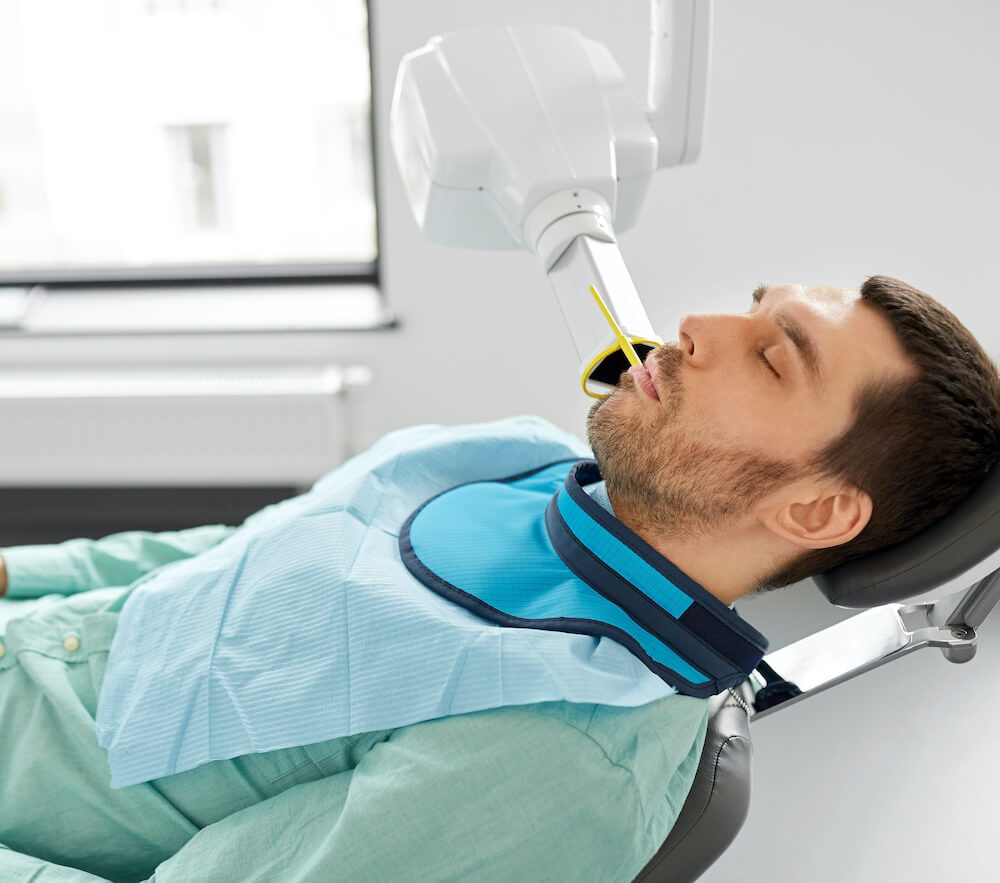X-rays have long been a part of diagnostic health care since their inception in 1895. However, the X-rays of today are far different from those of yesteryear thanks to the many advancements in medical technology. While there are numerous additional radiologic diagnostic tools available to patients and practitioners today, X-rays are still invaluable in allowing practitioners to view bones and other tissues that cannot be seen with the naked eye.
X-rays are also paramount to diagnostic dentistry. As a diagnostic tool, dental X-rays are essential in revealing valuable information not otherwise visible during a regular dental exam. They enable dentists to look at what is going on between teeth and under the gum, then use this information to safely and accurately detect hidden dental abnormalities and create an accurate treatment plan. By using X-rays, dentists can often diagnose and solve problems in the oral cavity before they become larger concerns, helping you save time and money.
The type of X-ray you will see used at Dr. Tuan Pham’s dental office at your next appointment is the digital X-ray. Here you can find the answers to some of your biggest questions about digital X-rays and can prepare yourself for your next trip to Dr. Pham’s office.

What Is a Digital X-Ray?
Digital radiography (digital X-ray) uses an electronic sensor instead of traditional X-ray film to capture images. The digital images are sent immediately and then stored directly to a computer. Once they are on the computer, your dentist can view the images, store them or print them out for you to see. You and your dentist will immediately be able to decide upon a plan of care rather than having to wait for images to develop.
Primary Types of Digital X-Rays in Dentistry
Digital X-rays can be used for both intra-oral and extra-oral X-rays, meaning X-rays of the inside and outside of the mouth. In either case, the electronic sensor that is placed in or next to your mouth has everything necessary for processing the X-ray picture quickly.
The most common types of intra-oral X-rays include the following:
- Bite-wing, highlight the crowns of the back teeth (upper and lower molars and bicuspids)
- Periapical, which shows the entire length of each tooth, from crown to root
The most common types of extra-oral X-rays are the following:
- Panoramic, which show an upper and lower picture of the entire mouth
- Tomograms, which show a single slice of the mouth
- Cephalometric, which show the entire side of the head along with the teeth
When Are Digital X-Rays Used?
You will most likely need to have bite-wing X-rays taken once per year to look for certain diseases of the teeth and oral tissues. Panoramic X-rays are usually taken every three years to provide an overall look at your oral cavity. Dr. Pham may use X-rays for the following needs.
- Show areas of decay between teeth
- Show areas of decay beneath fillings
- Look for bone loss
- Look for a tooth abscesses or cysts
- Provide a pre-treatment look before using braces or placing implants

Are Dental X-Rays Safe?
We are all exposed to natural radiation in our environment. Studies have shown that the radiation exposure from traditional bitewing dental X-rays is about the same amount of radiation you would get on an average day from the sun. Furthermore, digital X-rays produce up to 70% less radiation compared to traditional dental X-rays. Not only are digital X-rays better for the health and safety of the patient, they are faster and more comfortable to take, which reduces your time in the dental office. Since the digital image is captured electronically, there is no need to develop the X-rays, thus, eliminating the disposal of harmful waste and chemicals into the environment. Dr. Pham will only recommend dental X-rays that are necessary and use lead apron shields to help you avoid excessive radiation.
What Are the Benefits of Digital X-Rays?
Dr. Pham be able to direct your dental care more effectively with dental X-rays and you will benefit in many ways from choosing digital X-rays at your next appointment. Digital X-rays can be completed quickly and give off far less radiation than traditional X-rays do. Other benefits of digital X-rays include the following:
- Fast processing time
- Superb image quality
- less harmful waste products and chemicals
- Faster treatment plans



